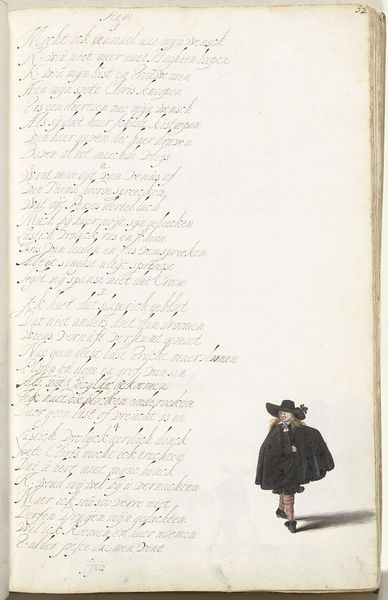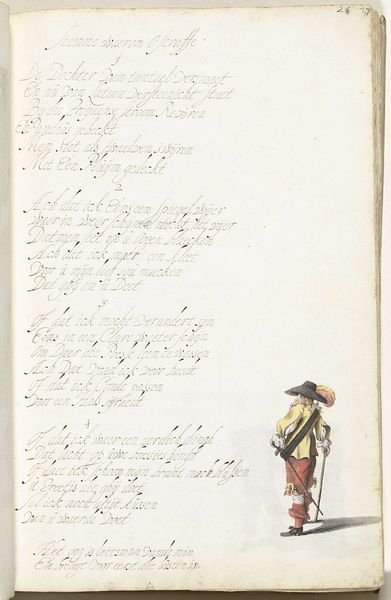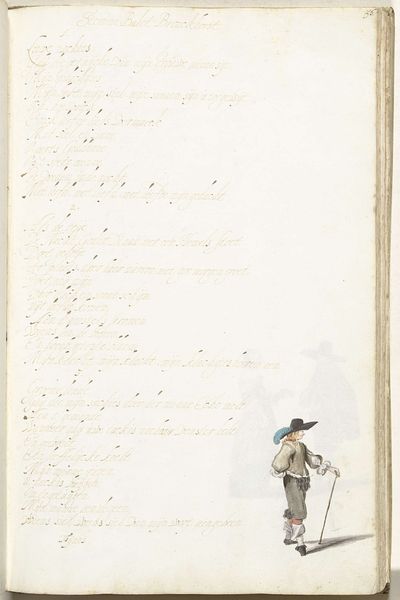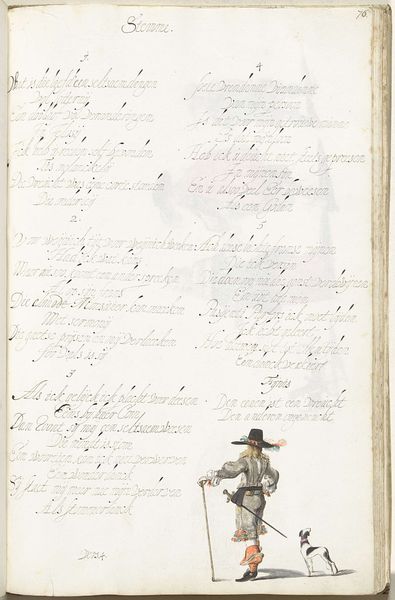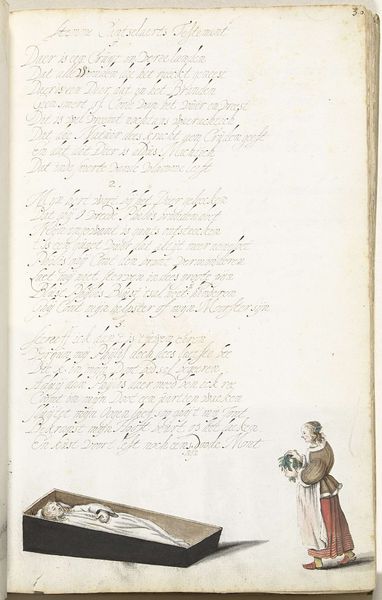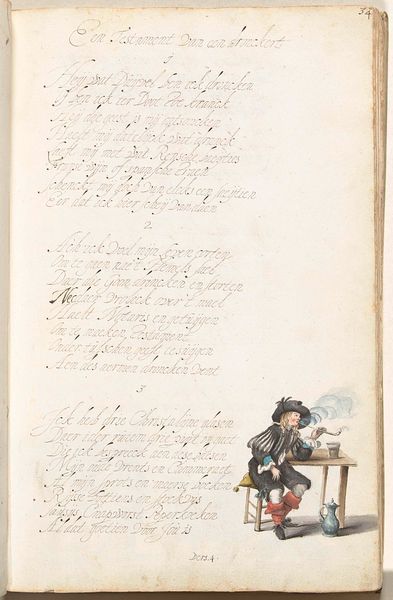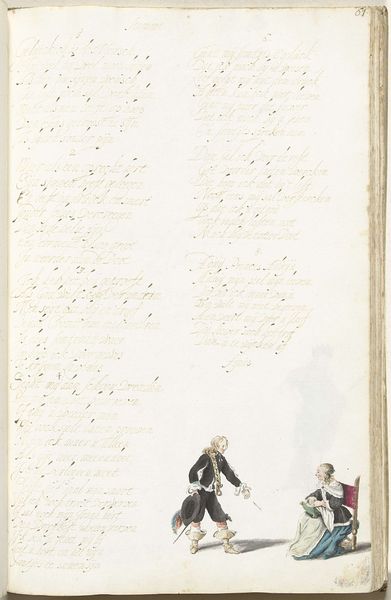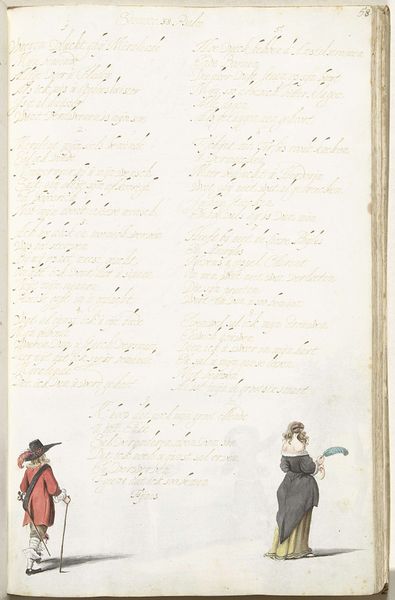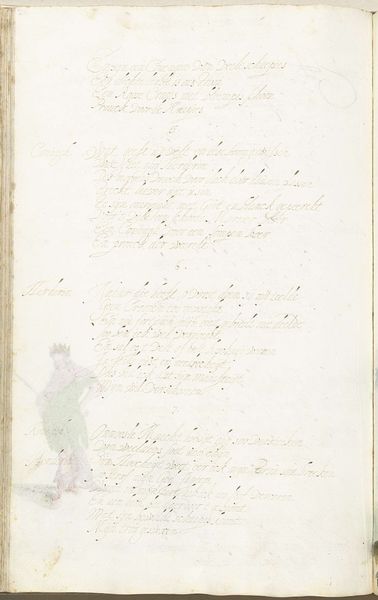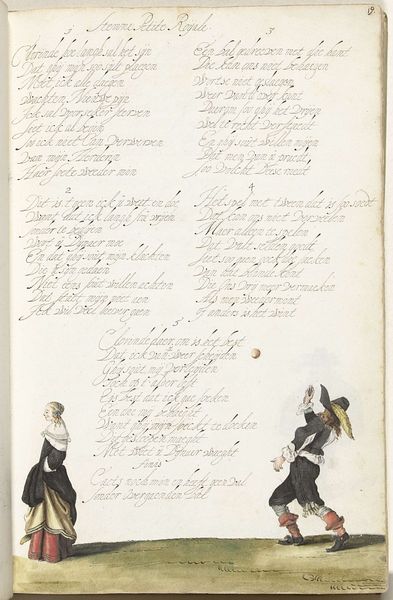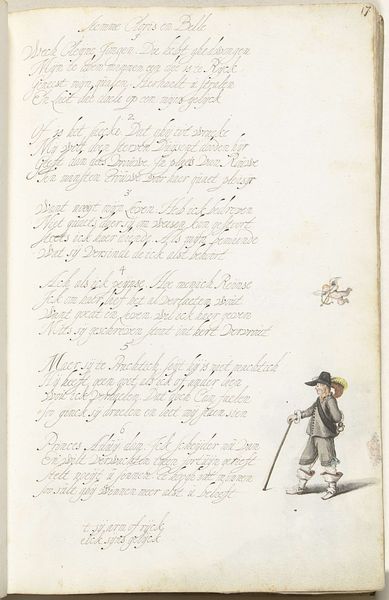
drawing, paper, ink
#
portrait
#
drawing
#
dutch-golden-age
#
paper
#
ink
#
genre-painting
Dimensions: height 313 mm, width 204 mm
Copyright: Rijks Museum: Open Domain
Curator: Here we have “Heer in Mantel,” a drawing from circa 1652-1653 by Gesina ter Borch, held in the collection of the Rijksmuseum. The work, rendered in ink on paper, gives us a glimpse into the Golden Age of Dutch art. What strikes you about it? Editor: Immediately, I notice the figure's costume—the cloak seems almost overwhelming, consuming the man’s frame. He's positioned alongside what looks like script, giving the piece an enigmatic, literary quality. Is he an observer, or part of the narrative written on the page? Curator: Interesting that you focused on the cloak! This type of garment possesses a rich history in symbolism, signifying status and mystery throughout various eras. I'm intrigued by its placement alongside the text—it's likely a conscious visual cue connecting status, power, and perhaps even the intellectual culture of the time. Editor: Indeed. Placing the image within its historical context, it reflects the emergence of portraiture among the Dutch middle class, showcasing individual identity and affluence during a period of economic expansion. One wonders who the sitter was, and how Ter Borch used attire to define or subtly critique social identity. Curator: I would argue, knowing Ter Borch, that there's commentary on gender, and power dynamics interwoven into the work. Notice how small his face and body are compared to the script and the billowing cloak. Perhaps it points to societal restrictions, an attempt to dominate the scene? Editor: That resonates—it positions the figure as almost secondary to the verse itself. Was she questioning male authority figures? Or rather, highlighting the dominance of patriarchal discourse over individual expression? Curator: Perhaps both, considering the context! A dance between text and figure that leaves us wondering: Is the poem about him, or does he serve to illustrate its meaning? It makes me curious if later female artists saw this connection to the politics of presentation through such careful positioning and emphasis. Editor: Precisely. What lingers for me is how art—even in seemingly straightforward portraits—can engage in these subtle visual dialogues, inviting continuous interpretations rooted in present social theories. Curator: A fantastic intersection to ponder upon – cultural symbols carrying meanings across time and informing a modern audience with their layered implications. Editor: Absolutely. Art history isn't just about what once was, but how we engage with the "once was" today.
Comments
No comments
Be the first to comment and join the conversation on the ultimate creative platform.
